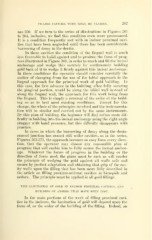Page 595 - My FlipBook
P. 595
FILLING CAVITIES WITH GOLD, BY CLASSES. 287
ure 250. If we turn to the series of illustrations in Figures 261
to 264, inclusive, we find this condition even more pronounced.
It is a condition frequently met with in incisor proximal cavi-
ties that have been neglected until there has been considerable
burrowing of decay in the dentin.
In these cavities the condition of the lingual wall is much
less favorable to build against and to produce the form of prog-
ress illustrated in Figure 368, in order to reach and fill the incisal
anchorage and wedge this securely by continuously ])uilding
gold back of it to wedge it firmly against this incisal anchorage.
In these conditions tlie operator should consider carefully the
matter of changing from the use of the labial approach to the
lingual approach for the principal work of gold building. In
this case, the first advance in the building, after fully securing
the gingival portion, would be along the labial wall instead of
along the lingual wall, the approach for this work being from
the lingual. This is simply a reversal of the order of the build-
ing so as to best meet existing conditions. Except for this
change, the whole of the princii)les involved and the instrumenta-
tion will be similar and carried out by the same instruments.
By this plan of building, the beginner will find rather more dif-
ficulty in building into the incisal anchorage using the right angle
plugger with hand pressure, but this difficulty disappears with
practice.
In cases in which the burrowing of decay along the dento-
enamel junction has caused still wider cavities, as in the series,
Figures 265-271, tlie approach becomes so easy from every direc-
tion, that the operator may choose any reasonable plan of
progress that will enable him to fully secure the incisal anchor-
age. Whatever the forms of progress in the building or the
direction of force used, the plans must be such as will render
the principle of wedging the gold against all walls safe and
secure by perfect adaptation and obtaining that grip of the cav-
ity walls upon the filling that has been more fully described in
the article on filling proximo-occlusal cavities in bicuspids and
molars. The principle must be applied in all gold fillings.
THE LAMINATION OF GOLD IN INCISOR PROXIMAL CAVITIES, AND
BUILDING OF ANGLES THAT HAVE BEEN LOST.
In the main portions of the work of filling proximal cavi-
ties in the incisors, the lamination of gold will depend upon the
form of, or the order of the building of the filling. Indeed, an


